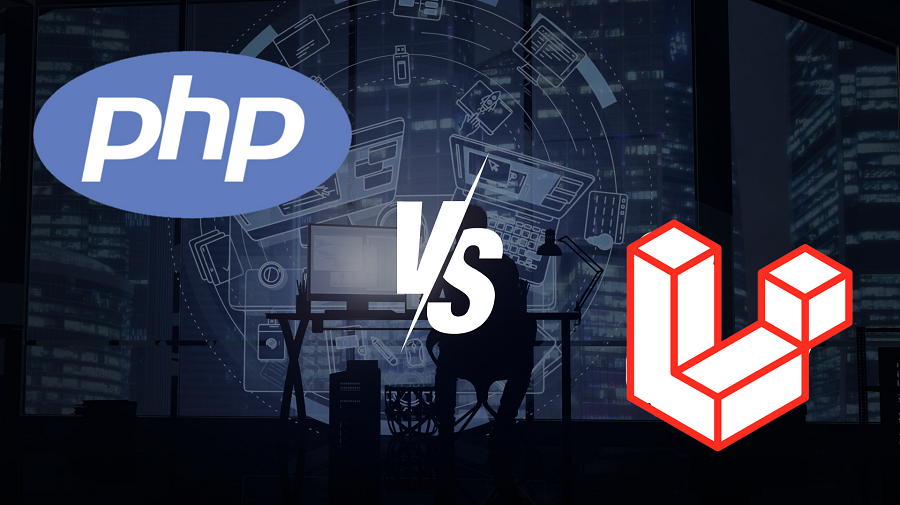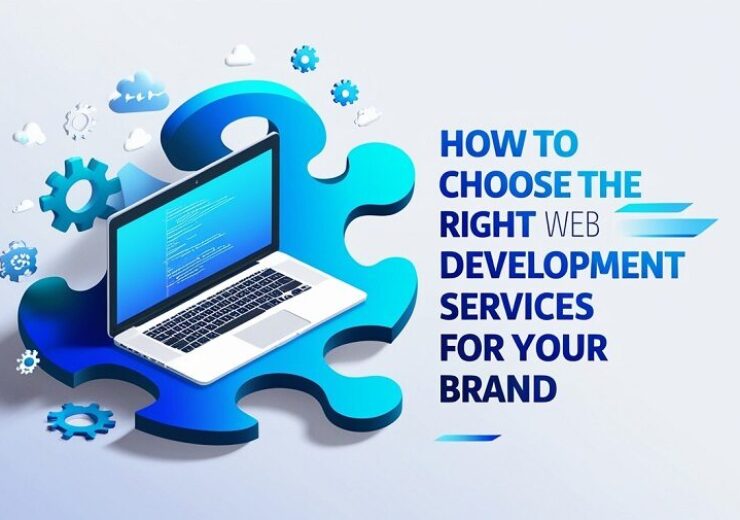Core PHP vs. Laravel: Best for Your Web Apps in 2024

In the realm of web development, selecting the right framework can significantly impact the success and efficiency of your projects. Two popular options that often come into comparison are Core PHP and Laravel. In this article, we’ll delve into the core aspects of both frameworks to help you make an informed decision for your web applications in 2024.
Understanding Core PHP and Laravel: Basics Explained
————————————–
Let’s start with the basics. Core PHP is a server-side scripting language that powers a large portion of the internet. It provides the foundation for dynamic web page creation and interacts seamlessly with databases to retrieve and manipulate data. With Core PHP, developers have full control over the code, allowing for maximum flexibility and customization.
On the other hand, Laravel is a modern PHP framework that simplifies the development process by providing a robust set of tools and libraries. Laravel comes with built-in features such as routing, authentication, and database ORM, speeding up the development process and reducing boilerplate code.
Performance Comparison: Core PHP vs. Laravel
————————————–
When it comes to performance, both Core PHP and Laravel can deliver fast and efficient web applications. However, Laravel’s built-in features and optimizations can often lead to better performance out of the box. Laravel’s ORM (Object-Relational Mapping) system, for example, allows for efficient database queries, reducing latency and improving response times.
Core PHP, on the other hand, offers complete control over the code, allowing developers to fine-tune performance optimizations based on specific project requirements. While this level of control can lead to highly optimized applications, it also requires more manual effort and expertise from developers.
Development Speed: Which One Saves You More Time?
————————————–
In terms of development speed, Laravel holds a significant advantage over Core PHP. Laravel’s elegant syntax and built-in features streamline the development process, allowing developers to focus on building features rather than reinventing the wheel. Tasks such as authentication, routing, and form validation are handled out of the box, saving developers valuable time and effort.
Additionally, Laravel’s vibrant ecosystem provides access to a wide range of third-party packages and extensions, further accelerating development. Core PHP, while flexible, often requires more manual setup and configuration, slowing down the development process, especially for complex applications.
Security Features: Core PHP vs. Laravel
————————————–
Security is paramount in web development, and both Core PHP and Laravel offer measures to ensure the safety of your applications. Laravel, however, goes a step further by providing built-in security features such as CSRF (Cross-Site Request Forgery) protection, encryption, and authentication scaffolding.
Laravel’s ORM also helps mitigate SQL injection attacks by automatically sanitizing database inputs. Additionally, Laravel’s intuitive authentication system makes it easy to implement secure user authentication and access control mechanisms.
Core PHP, while secure when implemented correctly, requires developers to manually implement security measures such as input validation, output escaping, and authentication mechanisms. While this level of control can be advantageous in certain scenarios, it also increases the risk of human error and oversight.
Scalability: Which Framework Suits Your Growing Needs?
————————————–
Scalability is another crucial factor to consider when choosing a framework for your web applications. Both Core PHP and Laravel are capable of scaling to meet the demands of growing user bases and increasing traffic.
Laravel’s modular and flexible architecture makes it well-suited for scaling horizontally by distributing application load across multiple servers. Additionally, Laravel’s built-in support for caching and queueing mechanisms further enhances scalability by optimizing application performance and resource utilization.
Core PHP, while capable of scaling, may require more manual effort and architectural considerations, especially for large-scale applications. Developers must carefully design the application architecture and implement scalability best practices to ensure smooth scaling as the application grows.
Community Support and Documentation: Core PHP vs. Laravel
————————————–
One significant aspect to consider when selecting a framework is the level of community support and the quality of documentation available. Core PHP, being a fundamental language for web development, has a vast community of developers worldwide. However, the support and documentation for specific functionalities may vary. Since PHP is open-source, developers often rely on forums, tutorials, and official documentation for guidance.
On the other hand, Laravel boasts a robust community and extensive documentation. Laravel’s community is known for its active engagement, providing support through forums, social media groups, and dedicated channels like Laravel News. The official documentation is comprehensive, offering detailed explanations, code examples, and tutorials for various features. This level of support can significantly ease the learning process and troubleshooting for developers.
Learning Curve: Which One is Easier for Beginners?
————————————–
For developers, especially beginners, the learning curve of a framework plays a vital role in the decision-making process. Core PHP, being the foundational language for web development, has a relatively straightforward syntax and structure. Developers familiar with procedural programming find it easier to grasp the concepts of Core PHP. However, mastering advanced PHP concepts and best practices may require time and experience.
In contrast, Laravel follows the Model-View-Controller (MVC) architectural pattern and promotes modern PHP development practices such as object-oriented programming and dependency injection. While this might seem daunting initially, Laravel’s elegant syntax and expressive features make it accessible to beginners. The framework’s extensive documentation and active community support further facilitate the learning process, enabling developers to quickly build and deploy applications.
Cost Considerations: Core PHP vs. Laravel Development
————————————–
Cost is a crucial factor in any development project, and choosing the right framework can impact overall expenses. Core PHP, being open-source, incurs minimal upfront costs as it does not require any licensing fees. Developers can leverage a wide range of free resources, libraries, and tools to build web applications using Core PHP. However, the total cost of ownership may increase when considering factors such as development time, maintenance, and scalability.
On the other hand, while Laravel is also open-source, it offers additional features and tools that can enhance productivity and streamline development processes. While there are no licensing fees for using Laravel, developers may incur costs for premium packages, third-party integrations, or hiring specialized Laravel developers. Despite these potential expenses, many businesses find that the productivity gains and long-term benefits of using Laravel outweigh the initial investment.
Customization and Flexibility: Core PHP vs. Laravel
————————————–
The ability to customize and adapt a framework to meet specific project requirements is essential for developers. Core PHP provides unparalleled flexibility, allowing developers to tailor every aspect of their applications according to their needs. Since PHP is a server-side scripting language, developers have full control over the codebase and can implement custom solutions without limitations.
Laravel, while offering a high degree of flexibility, follows certain conventions and best practices to maintain consistency and readability. The framework provides numerous built-in features and libraries for common tasks such as authentication, routing, and database management. While these features enhance productivity and standardize development workflows, they may limit the extent of customization for some developers. However, Laravel’s modular structure and support for third-party packages enable developers to extend and modify its functionality as needed.
Maintenance and Updates: Managing Your Web App Long-Term
————————————–
Once a web application is deployed, ongoing maintenance and updates are essential to ensure optimal performance, security, and compatibility. Core PHP applications require manual management of updates, security patches, and server configurations. Since Core PHP does not impose any specific conventions or guidelines, developers are responsible for implementing best practices and staying informed about emerging trends and vulnerabilities.
In contrast, Laravel simplifies the maintenance and updating process through its built-in features such as Artisan commands, database migrations, and automated testing. The framework follows semantic versioning, ensuring backward compatibility and providing clear guidelines for handling updates. Laravel’s active development community regularly releases updates, security patches, and new features, making it easier for developers to keep their applications up-to-date and secure.
Case Studies: Successful Applications Built with Core PHP and Laravel
————————————–
Core PHP has been a staple in web development for years, known for its flexibility and raw power. Many successful applications, including WordPress, Joomla, and Magento, have been built using Core PHP. Its simplicity and wide adoption make it a preferred choice for developers who require full control over their code and performance optimization.
Applications like Laravel Forge, Laravel Envoyer, and Laravel Spark showcase the versatility and scalability of this framework. Laravel’s built-in features such as authentication, routing, and ORM make development efficient and enjoyable.
Making Your Decision
————————————–
When deciding between Core PHP and Laravel for your web app in 2024, several factors come into play. Consider the following aspects to make an informed decision:
- Project Complexity: For simple projects with straightforward requirements, Core PHP might suffice. However, for complex applications with intricate functionalities, Laravel’s modular structure and built-in tools can streamline development and maintenance processes.
- Development Time: Laravel’s expressive syntax and pre-built components significantly reduce development time compared to Core PHP. If you’re working on a tight deadline or require rapid prototyping, Laravel might be the better choice.
- Scalability Requirements: If scalability is a priority for your web app, Laravel’s support for horizontal scaling and robust caching mechanisms make it an ideal choice. Core PHP applications can also be scaled, but additional effort might be required compared to Laravel.
- Community Support and Documentation: Both Core PHP and Laravel have active communities and extensive documentation. However, Laravel’s community is known for its responsiveness and wealth of resources, making troubleshooting and learning easier for developers.
- Budget Constraints: Core PHP, being a foundational language, incurs fewer costs compared to Laravel, which might require investment in additional tools or resources. Consider your budget constraints and long-term investment when making this decision.
- Long-Term Maintenance: While Core PHP provides full control over the codebase, maintaining and updating large-scale applications can become challenging over time. Laravel’s built-in features and conventions promote code maintainability and ease of updates, reducing long-term maintenance efforts.
In conclusion, both Core PHP and Laravel have their strengths and weaknesses, and the choice between them ultimately depends on your project requirements, development preferences, and long-term goals. If you prioritize rapid development, built-in security features, and scalability, Laravel may be the ideal choice for your web applications in 2024. However, if you require maximum flexibility and control over your codebase, Core PHP might be the better option. Ultimately, it’s essential to weigh the pros and cons of each framework and choose the one that best aligns with your project needs.




